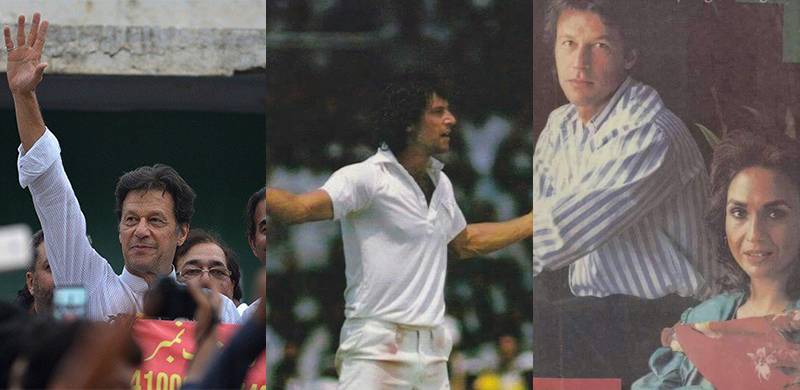
Evolution is a slow process. It may seem to move in a straight line, but during this movement, that which is evolving, goes through various mutations and changes to stay the course. Course correction is thus a vital ingredient in this context. If the mutations fail to meet the criteria that the evolutionary course demands, it can throw one on diversionary paths which often lead to dead-ends and on the wrong sides of history.
But being thrown off in this regard can be rectified by making further adjustments to the mutation process and get back on the evolutionary path. Maybe this too is part of evolving, as long as one doesn’t get stuck on the diversionary paths or on the wrong side of history, which is the sum of evolutionary events.
The current prime minister of Pakistan, Imran Khan, has evolved from being a star cricketer, socialite, ‘playboy,’ philanthropist, populist and now head of government. So one can say, the laurels that he won as a cricketer, philanthropist and most recently as a ‘measured and astute prime minister,’ was due to him staying the course of evolution; whereas the many controversies that he gathered along the way and which frequently threatened to relegate his sporting and political careers to the fringes, was him falling off the evolutionary path due to mutations unsuited to the evolutionary process.
One never stops evolving, even though some chose not to. But Khan has, despite the fact that many of his mutations did seem to have thrown him off the evolutionary course. But he has often managed to get back on.
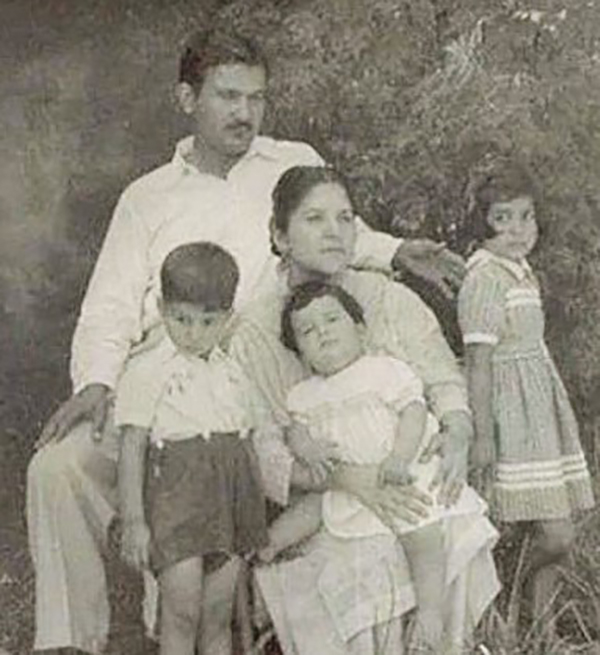
Lahore: Imran (left) with his parents and sisters in the late 1950s. His father was a civil engineer and mother, a housewife.
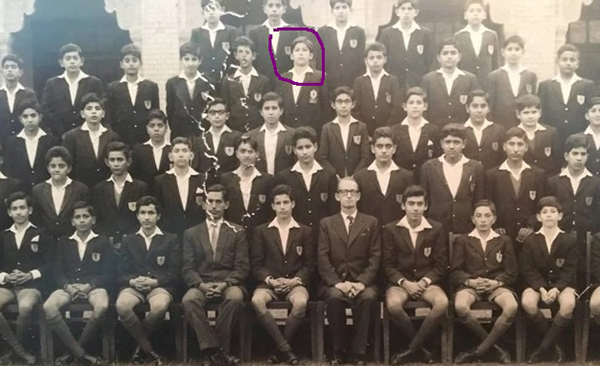
1964: Khan at Lahore’s prestigious educational institution, Aitchison, in 1964. Growing up, Khan wasn’t very close to his father. So the school’s teacher, Major Geoffrey Douglas (sitting in front), became a father figure to him.
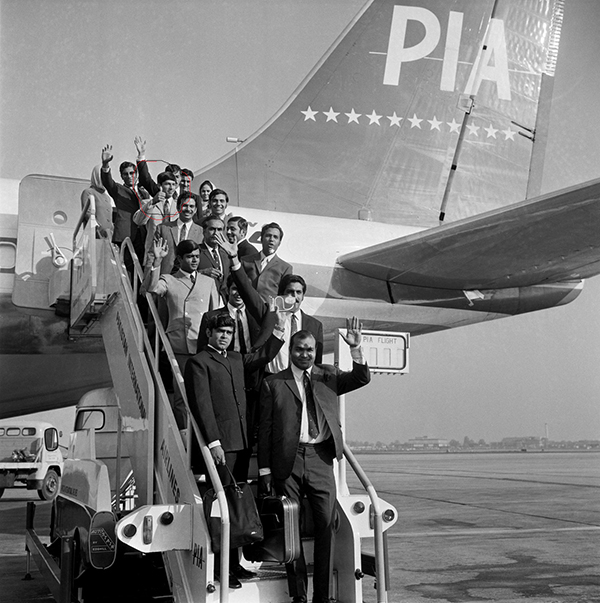
1971: An 18-year-old Khan gives the thumbs-up as he boards a PIA flight with the Pakistan cricket team for its 1971 tour of England. Khan was already set to join the Royal Grammar School in Worcester. The team was led by Intikhab Alam. Khan was selected as a bowling all-rounder.

The Pakistan team’s 1971 summer tour of England was marred by protests organized by Bengali nationalists of East Pakistan. They were demanding the separation of East Pakistan and the creation of Bangladesh. A civil war had erupted in East Pakistan.
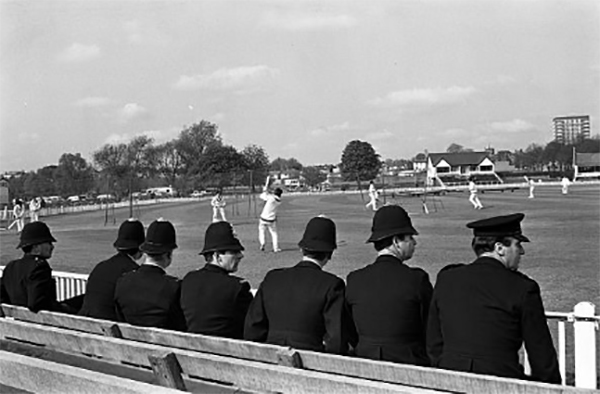
British police was posted during Pakistan’s practice sessions during the tour after East Pakistanis living in the UK threatened to disrupt the matches. Tensions ran high after a group of Pakistani players led by opener (and self-claimed Marxist) Aftab Gul refused to sign a bat which was to be auctioned. The money was to go in the fund for East Pakistan’s flood victims. But Gul claimed that the money would end up in the hands of militant Bengali nationalists. The government of Pakistan intervened and asked the players to sign the bat.
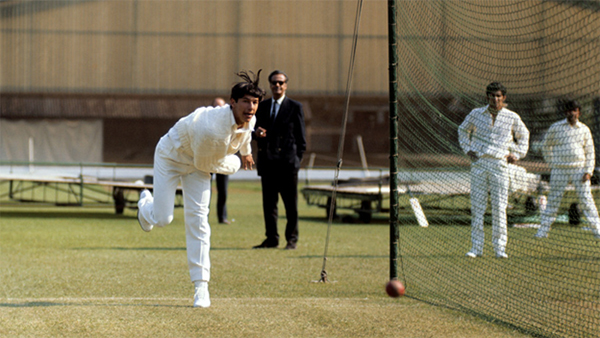
Khan bowling in the nets just before making his test debut on the tour. The debut was terrible. He could not control the swing that he got in English conditions and was belted by the English batsmen.

1973: Khan bowling for Worcestershire in 1973. After a rather unremarkable test debut in 1971, Khan had joined Oxford University as a student. He was ignored by the Pakistan selectors for Pakistan’s 1972 tours of Australia and New Zealand and then again during the team’s 1973 home series against England.

1974: Khan bags his first test wicket. On the basis of his performances for Worcestershire and Oxford University teams, Khan returned to the Pakistan side during Pakistan’s 1974 tour of England.
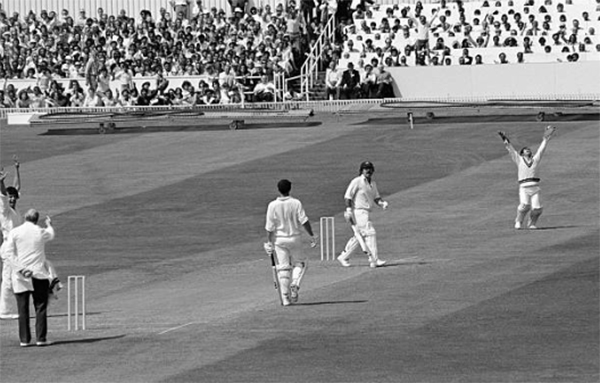
1975: Khan in action during Pakistan’s match against Australia at the first Cricket World Cup in England in 1975. Khan had not been selected for Pakistan’s home series against the West Indies. This was the only game that he played in the tournament, missing the remaining because he had to sit for exams at Oxford.
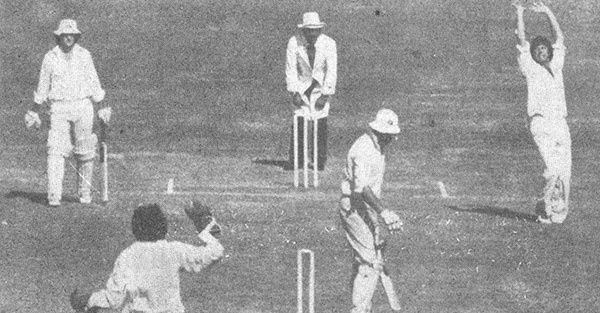
1976: Khan uproots the stumps during Pakistan’s home series against New Zealand in 1976.
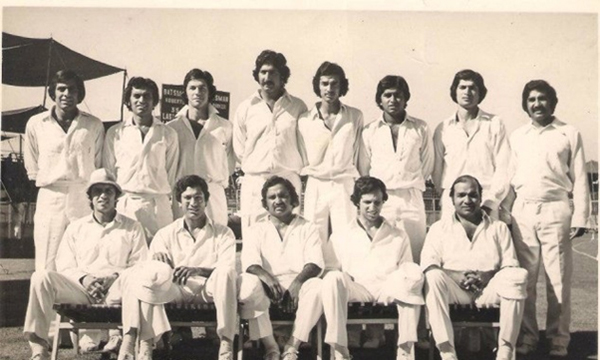
The Pakistan team for the third test at Karachi’s National Stadium during Pakistan’s home series against New Zealand. (Standing From Left): Haroon Rashid; Rashid Israr (wk); Imran; Sarfraz Nawaz; Sikandar Bakht; Javed Miandad; Mohsin Khan; Sadiq Mohammad. (Sitting From Left): Majid Khan; Zaheer Abbas; Mushtaq Mohammad (Capt.); Asif Iqbal (VC); Intikhab Alam. At the end of the series which Pakistan won 2-0, skipper Mushtaq demanded a pay raise for the players. Cricket chief AH Kardar refused. Mushtaq along with many other players (including Imran) refused to play in the upcoming tours of Australia and the West Indies. Kardar removed them and reinstated Intikhab as captain. PM ZA Bhutto intervened and asked Kardar to accept the players’ demands.
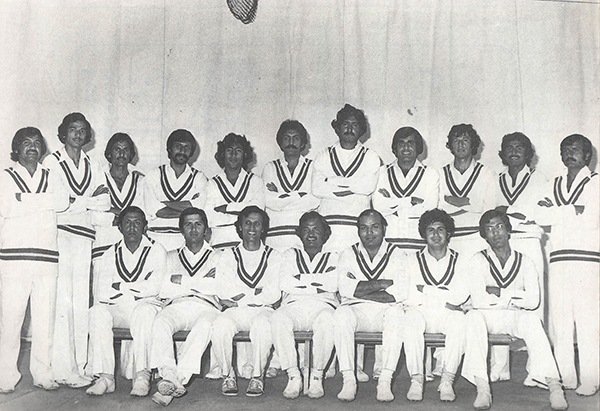
1976: The Pakistani squad for the 1976-77 tours of Australia & West Indies. (Standing From Left): Sadiq Mohammad, Sikandar Bakht, Taslim Arif (WK); Wasim Raja, Mudassar Nazar, Asif Masood, Sarfraz Nawaz, Haroon Rashid, Imran Khan, Javed Miandad, Iqbal Wasim. (Sitting From Left): Salim Altaf, Majid Khan, Asif Iqbal (VC), Mushtaq Mohammad (Cpt.), Intikhab Alam, Wasim Bari (WK), Zaheer Abbas.
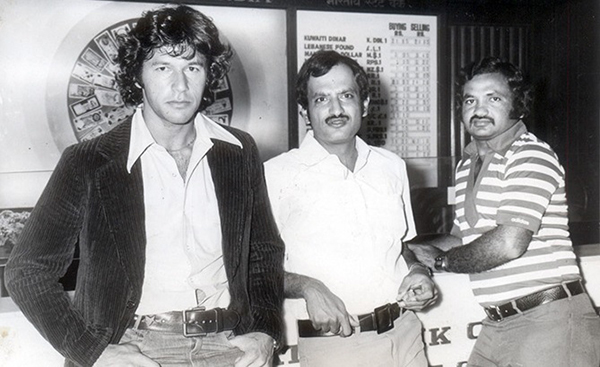
Khan with former Indian captain Ajit Wadekar and Pakistan captain Mushtaq. Khan bloomed into a genuine fast bowler during Mushtaq’s captaincy.
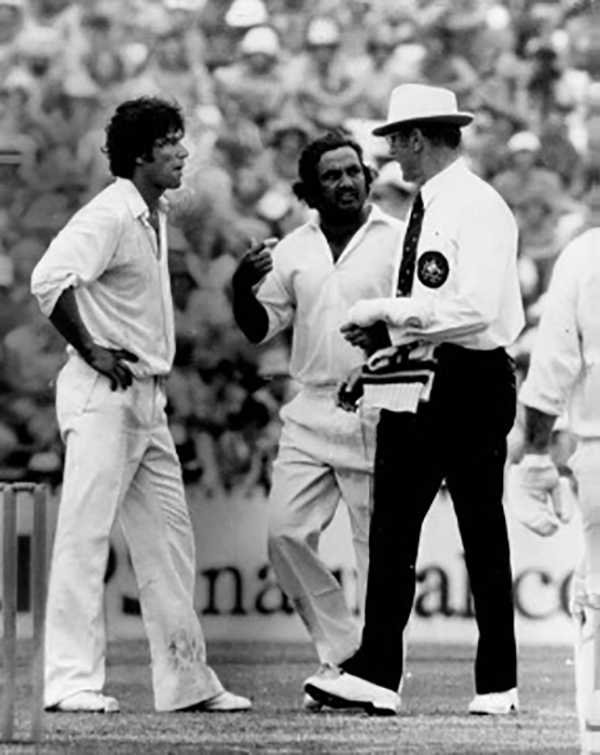
1976: Mushtaq and Khan argue with the umpire during the 1976 series against Australia. It was an intensely fought series in which sledging and bouncers were liberally used. In the 2nd test Khan was encouraged by Mushtaq to up his pace, which he did, considerably. Being 1-0 down, Pakistan bounced back to square the series 1-1. Khan picked up 12 wickets in the 3rd test.
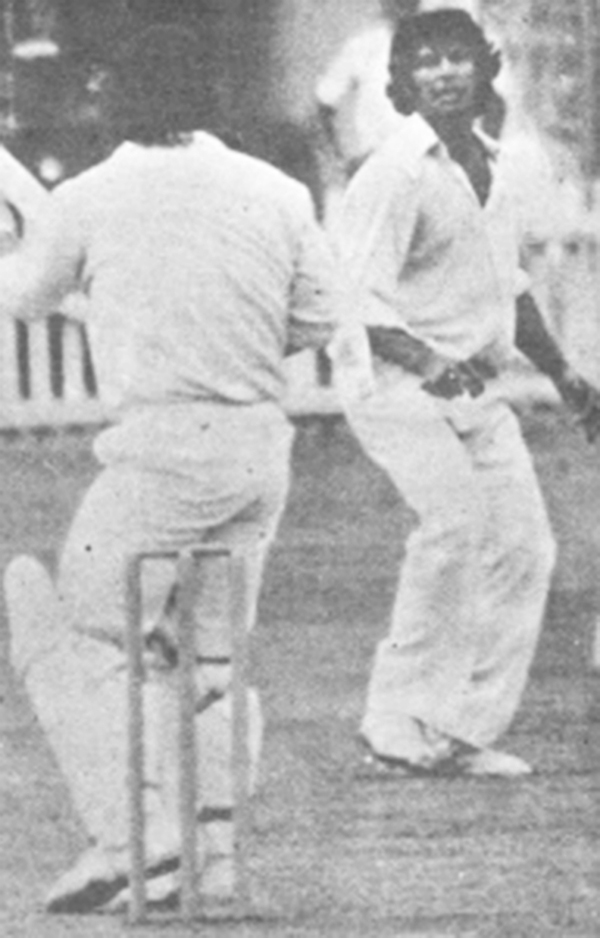
Khan and Rodney Marsh exchange words after Khan hit Marsh with a bouncer during the 3rd test at Sydney.
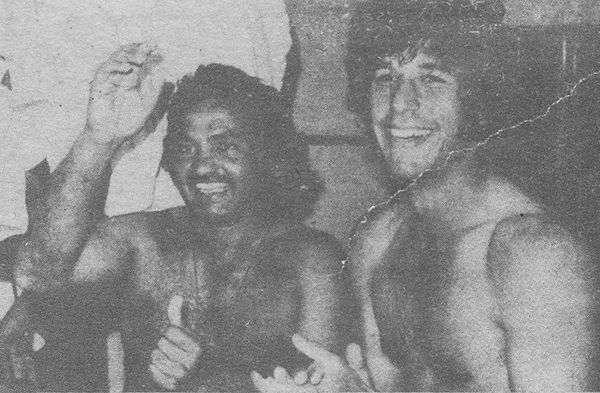
Khan and Mushtaq celebrate in the dressing room after squaring the series against Australia. Before the series, Australia had demolished England and West Indies.
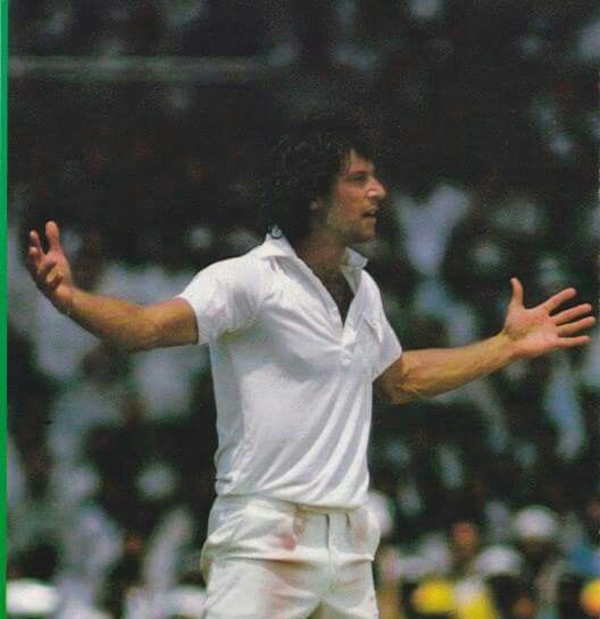
1977: Khan is not amused by the umpiring during Pakistan’s 1977 tour of West Indies. Pakistan closely lost the series 2-1. Khan’s ascent as a genuine fast bowler and ‘sex symbol’ had begun.
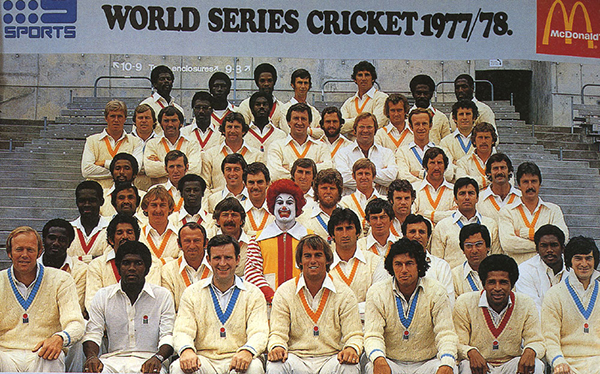
In 1977 the cricket world was shaken when Australian media tycoon Kerry Packer signed up some of the world’s top players for a league which was not recognised by the ICC. The players were debarred from playing for their respective countries. A majority of the players belonged to Australia and West Indies. Five were from England, three from South Africa, one from New Zealand and five from Pakistan. No Indian player signed up for the lucrative event. Called the World Series Cricket (WSC), it was the WSC which introduced night cricket, white balls, coloured clothing, helmets and higher salaries. The 5 Pakistanis who joined were Imran, Mushtaq, Majid, Asif Iqbal and Zaheer. They were not selected for Pakistan’s home and away series against England in late 1977 and mid-1978.
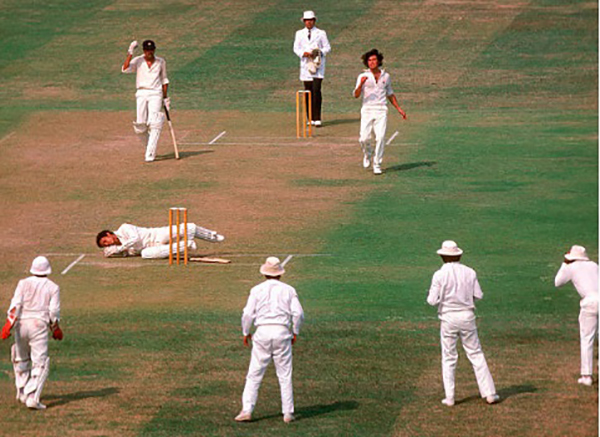
1978: Imran downs an Indian batsman with a vicious bouncer in Lahore during the 1978 series against India. The 5 WSC players were reinstated in the team.
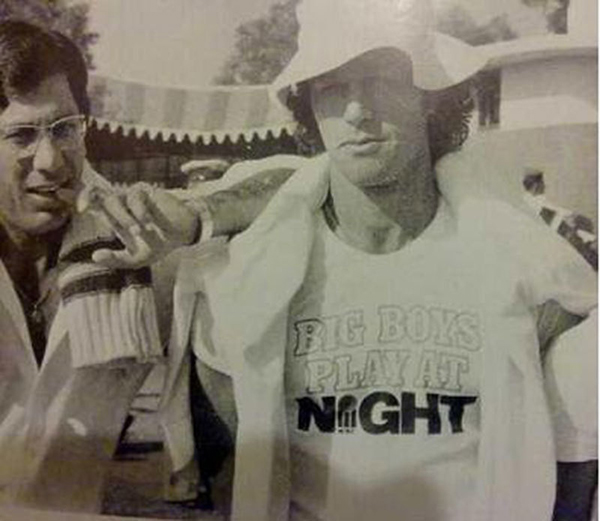
Khan with Zaheer during Pakistan’s home series against India in 1978.
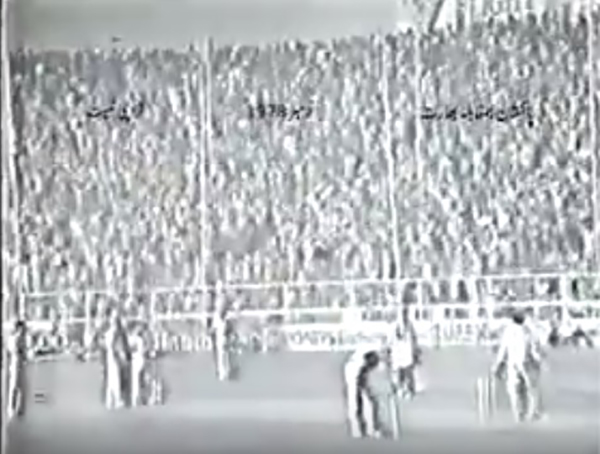
Khan comes into bat on the last minutes of the 3rd test at Karachi during the 1978 series against India. Pakistan needed quick runs to win the game. Some lusty hitting by Khan sealed India’s fate. Pakistan won the series 2-0. Khan was quickly becoming an impressive all-rounder.
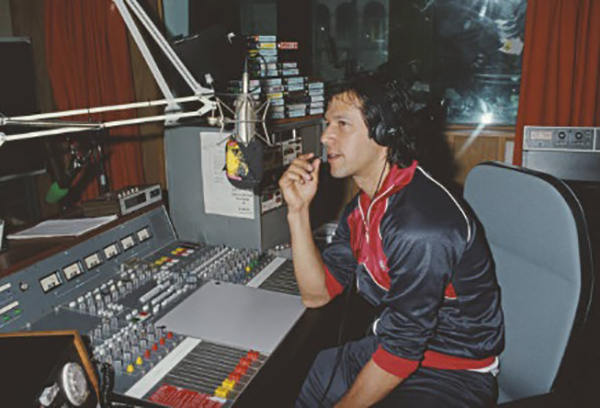
1979: Khan giving an interview to a radio station during Pakistan’s 1979 tour of Australia. The surviving recording of the interview suggests that even though he was invited to talk about cricket, an overwhelming number of those who called in were women who wanted to know about his ‘love life.’

1979: The Pakistan squad for the 1979 Cricket World Cup in England. (From Front): Asif Iqbal (who replaced Mushtaq as captain); Sadiq, Iqbal Qasim, Wasim Bari, Wasim Raja, Miandad, Majid Khan, Mudassar, Haroon Rashid, Hassan Jamil, Zaheer, Imran, Sarfraz and Javed Burki (manager).
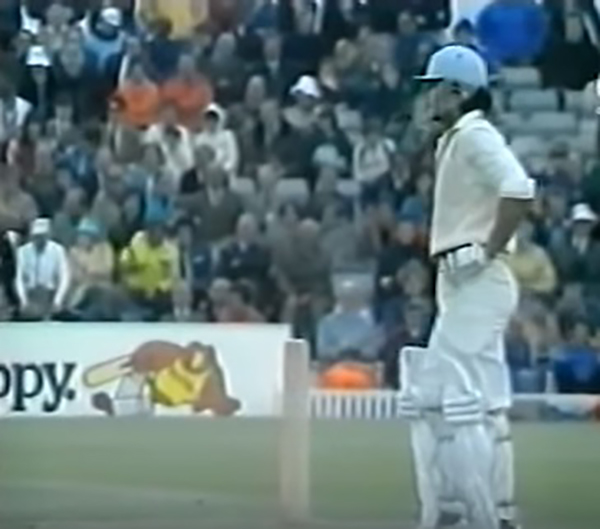
Khan is left stranded during a crucial match against England in the 1979 World Cup. Pakistan needed 14 in 4 overs when the last man Sikandar Bakht played a rash shot. Khan was livid and gave a mouthful to Sikandar.
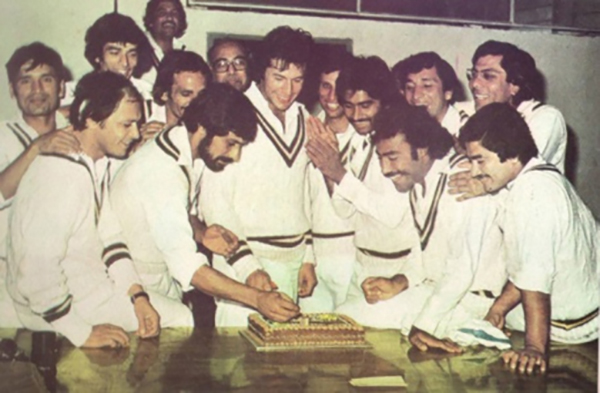
Khan celebrates his 27th birthday with teammates during Pakistan’s 1979 tour of India.
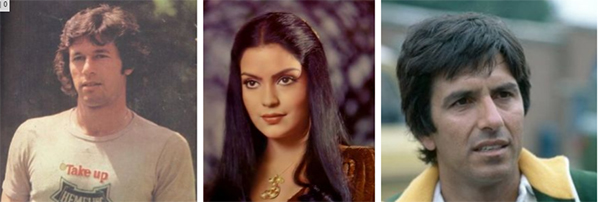
Pakistan’s long 1979 tour of India was a turbulent one. Pakistani and Indian press reported that many Pakistani players were spending most of their time at nightclubs and at parties. Then reports began to emerge about a torrid affair between Bollywood bombshell Zeenat Aman and Imran Khan. Indian magazine Society reported that Aman was staying with Khan. The affair was eventually brought to end by Imran’s elder cousin and teammate Majid Khan. Pakistan lost the series 2-0 and Asif Iqbal resigned from the captaincy.
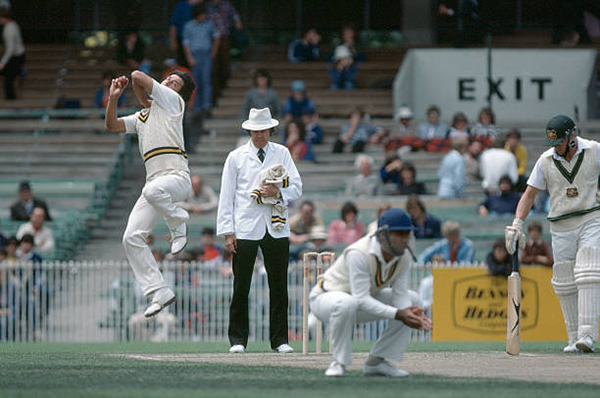
1981: Khan bowling during Pakistan’s 1981 tour of Australia.

Khan with fellow fast bowler Sarfraz Nawaz at a nightclub in Melbourne during Pakistan’s 1981 tour of Australia. Khan and Nawaz had become best friends from 1976 onwards. The friendship came to an end in 1993.
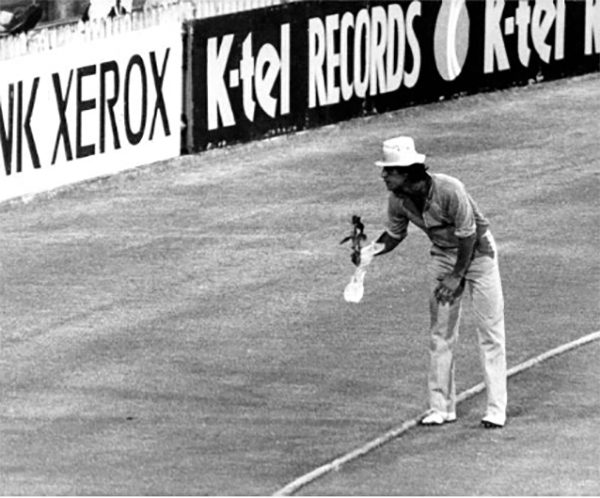
Khan graciously accepts a rose from a woman during an ODI in Australia, 1981.
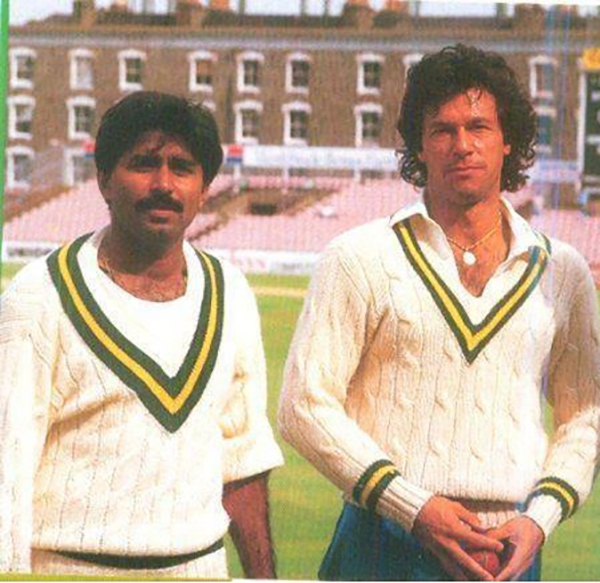
1982: Miandad with Khan. In 1982, a group of 10 players led by Majid refused to play under Miandad’s captaincy. He had been appointed captain in 1980. Khan was one of the 10 players. The rest were, Majid, Zaheer, Mohsin Khan, Mudasar Nazar, Sikandar, Iqbal Qasim, Wasim Raja, Wasim Bari and Sarfraz Nawaz. All 10 missed the first test of the 1982 home series against Sri Lanka. However, by the 2nd test, Mohsin and Raja broke away from the rebels. All others were back in the squad in the 3rd test when Miandad agreed to step down. According to Sikandar Bakht, the rebellion had already begun to crumble when Khan too decided to play.
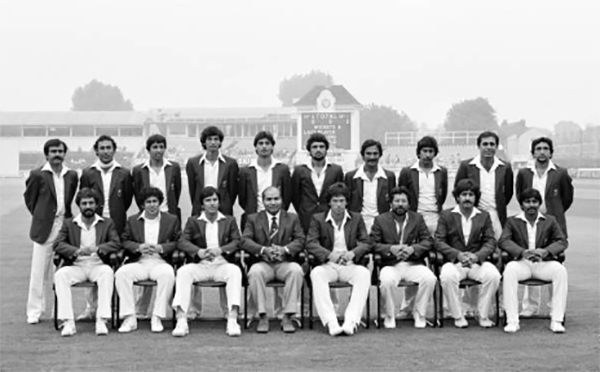
The Pakistan squad during its 1982 tour of England. In a surprising move, then 29-year-old Imran was made captain when Miandad decided to step down. Khan was hesitant at first, but eventually accepted the captaincy. (Standing From Left): Iqbal Qasim, Mudassar, Salim Yousaf (WK), Sikandar, Mohsin Khan, Tahir Naqash, Mansoor Akhtar, Slim Malik, haroon Rashid, Abdul Qadir. (Sitting From Left): Wasim Raja, Wasim Bari (Wk), Majid Khan, Intikhab Alam (manager), Imran (Capt.), Zaheer, Sarfraz and Miandad.
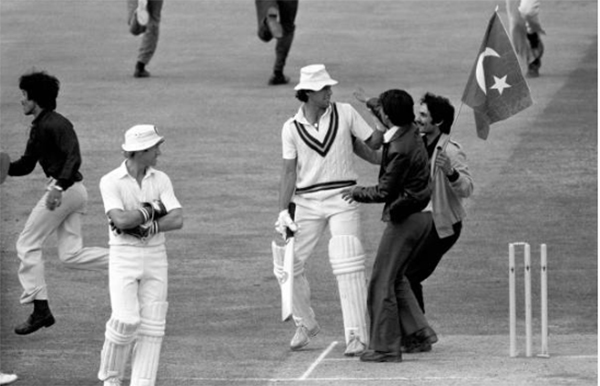
Imran is mobbed by Pakistani supporters after reaching fifty during the 1st Test of the 1982 England tour.
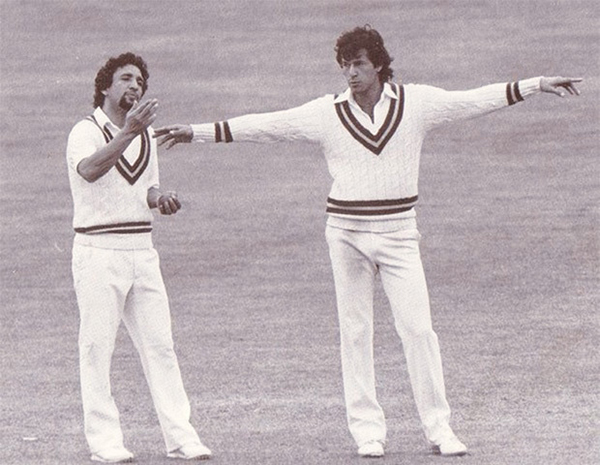
Khan with Abdul Qadir during the England series. Khan insisted on picking the discarded leg-spinner for the tour. To the British press, Khan described Qadir as a ‘spinning wizard.’ To complete the picture, he asked Qadir to grow a goatee. Qadir did not disappoint.
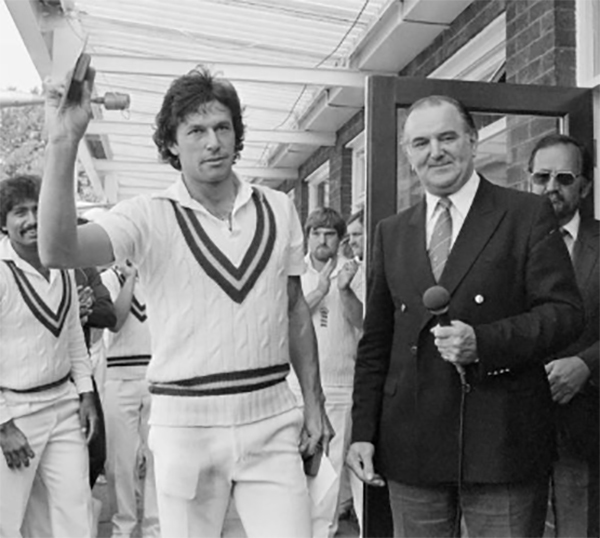
During the series, Pakistan won its first test in England after 28 years.
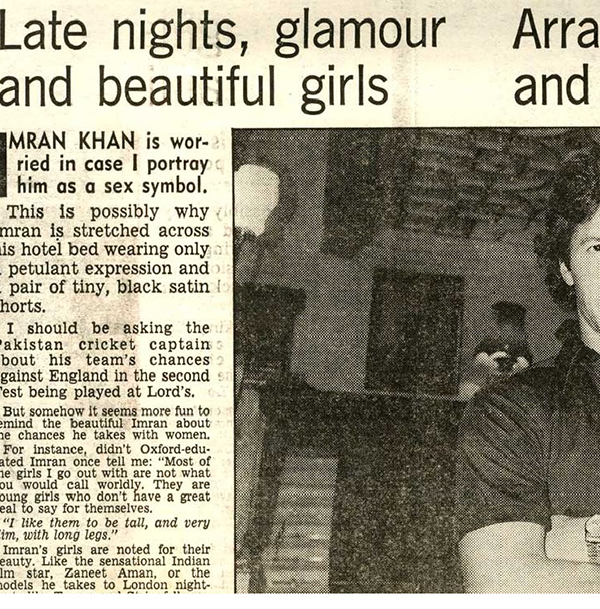
After the Indian press, the British tabloids began to frequently delve into Khan’s off-the-field exploits.
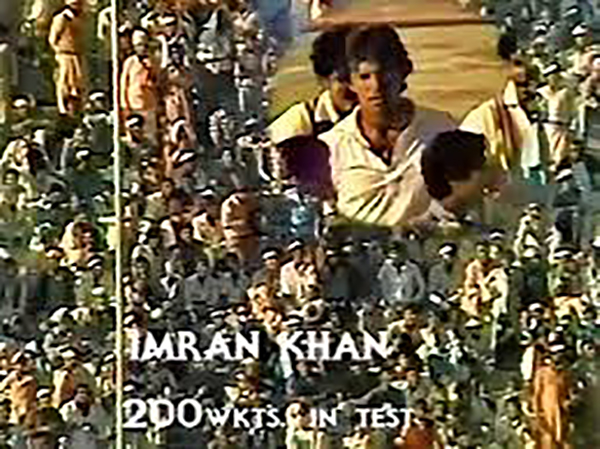
1983: After downing Australia 3-0 at home in 1982; Khan’s team beat India 3-0 in 1983. During the series, Khan picked up his 200th test wicket in Karachi.
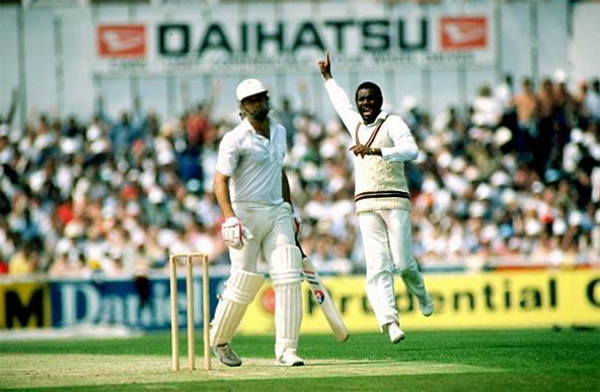
World Cup 1983. Khan is dismissed by West Indian quick, Malcom Marshall. Khan had suffered a hairline fracture in one of his shins and only played as captain and batsman in the World Cup. Pakistan was defeated by the Windies in the semi-finals.
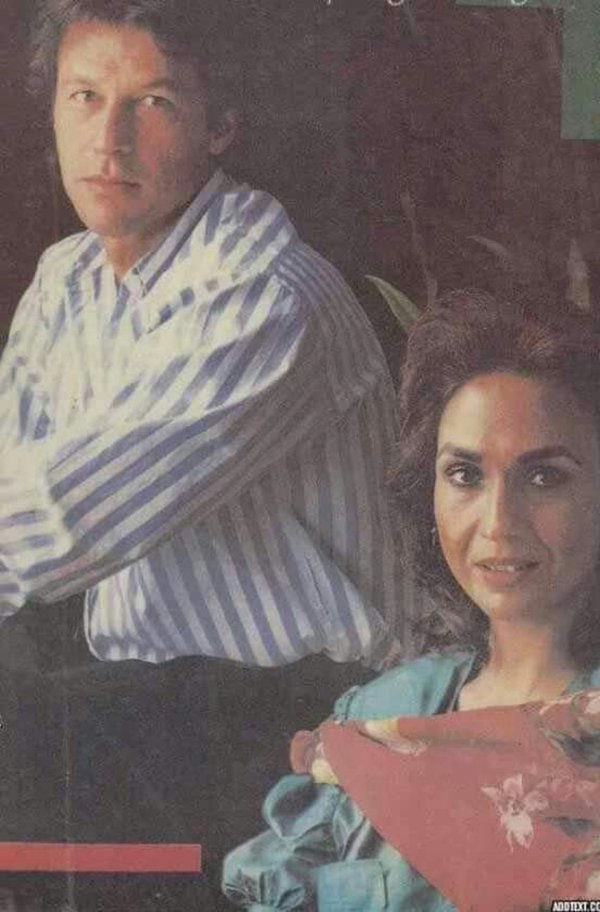
1984: Khan with British painter, Emma Sargent. Khan stopped playing cricket in 1984 after his shin injury worsened. He recuperated in his apartment in the UK.
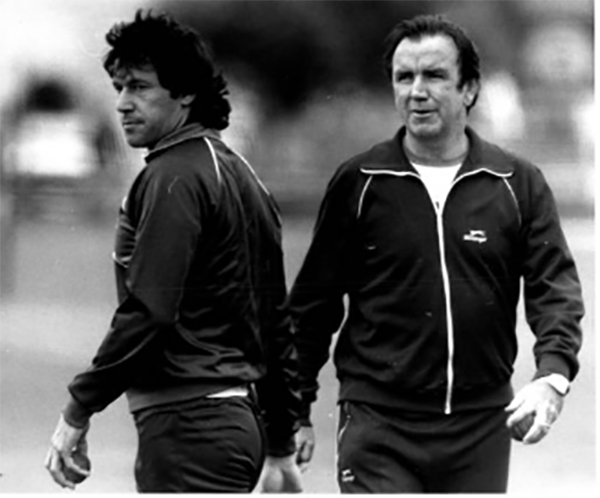
Khan with former Australian captain and coach, Bobby Simpson. In 1985, Khan played for New South Wales in Australia to regain fitness.
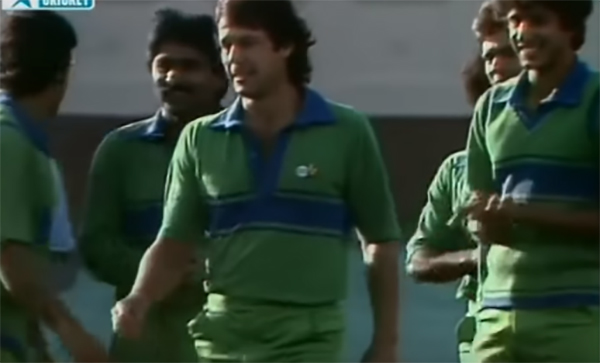
1985: Khan came roaring back into the side during the 1985 World Championship of Cricket in Australia. The side was then being led by Miandad.
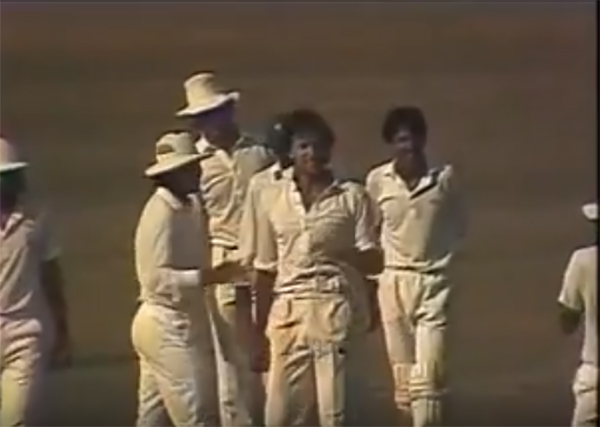
Lahore: Khan became captain again in 1986.
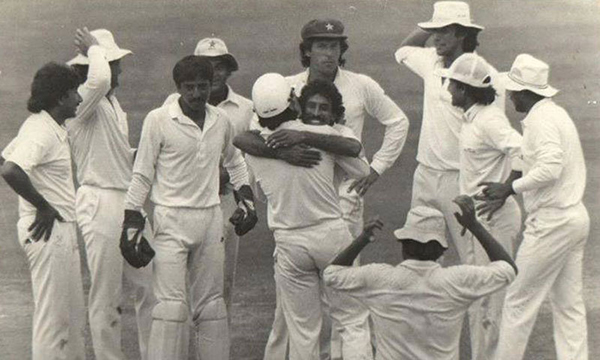
In early 1987 Khan led Pakistan to win its first series against India in India.
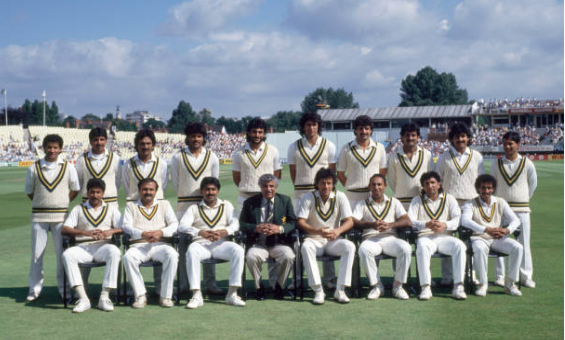
The Pakistan squad during its 1987 tour of England. (Standing From Left): Shoaib Mohammad, Salim Yousaf (WK), Mansoor Akhtar, Ijaz Ahmad, Mohsin Kamal, Wasim Akram, Zakir Hussain, Mansoor Ilahi, Rameez Raja, Asif Mujtaba. (Sitting From Left): Salim Malik, Iqbal Wasim, Javed Miandad (VC), Haseeb Ahsan (Manager), Imran (Cpt.), Mudassar Nazar, Abdul Qadir and Tauseef Ahmad.
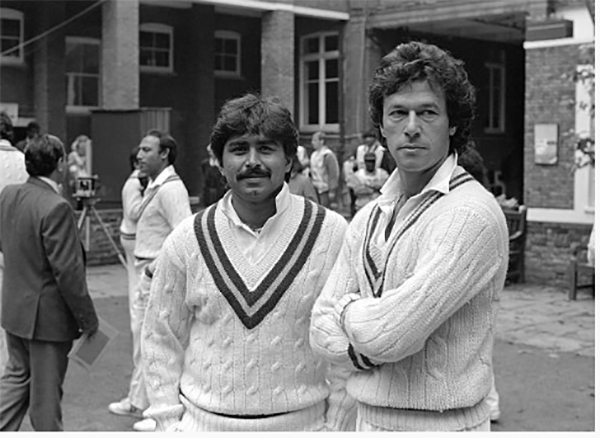
Vice-Captain and Captain during the 1987 England tour. Pakistan won its first ever series in England.
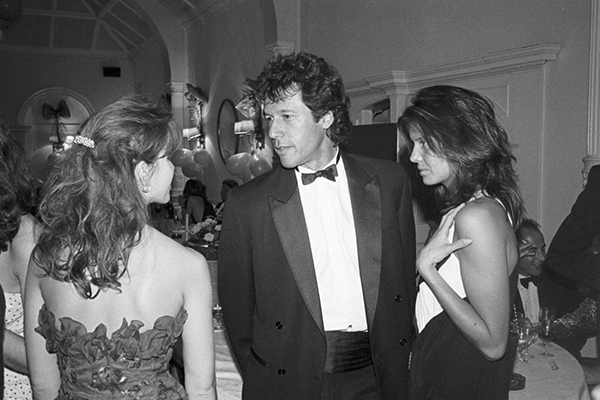
Khan with British actress Julia Verdin and fashion journalist Caroline Kellett at a party in London in 1987.
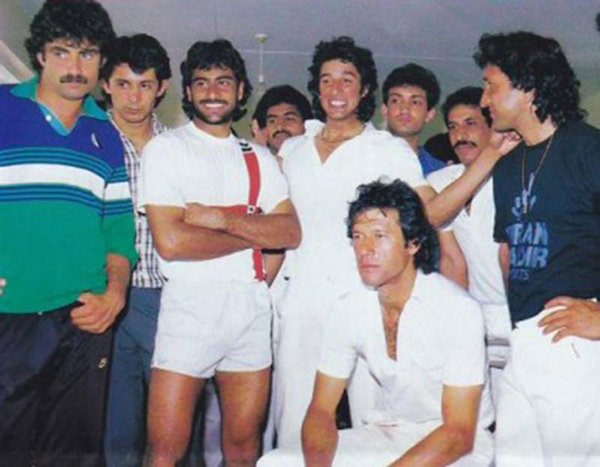
Khan with his men during the 1987 Cricket World Cup after winning a nail-biter against the West Indies in Lahore. However, Pakistan lost to Australia in the semi-finals. After the defeat, Khan announced his retirement.
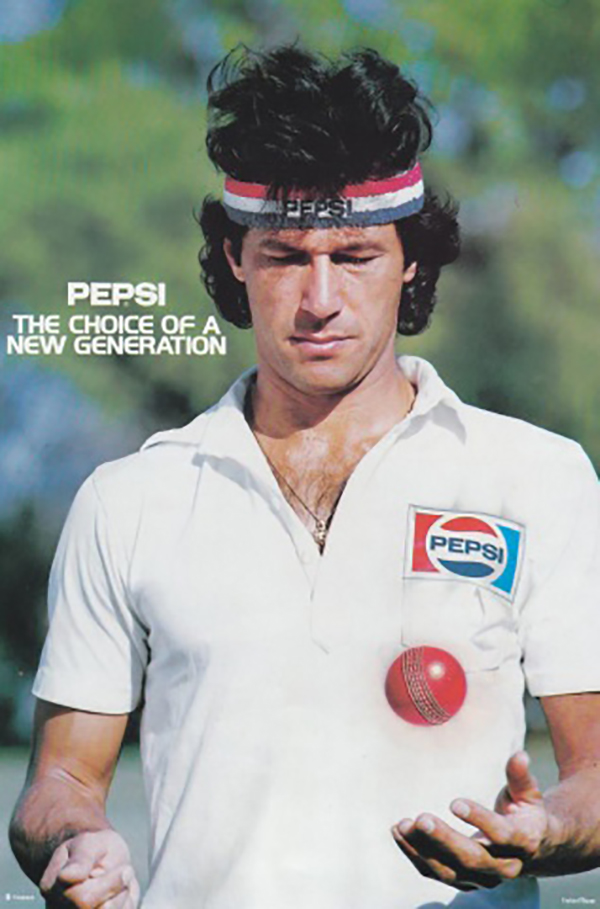
Khan’s 1987 Pepsi poster sold in the millions.
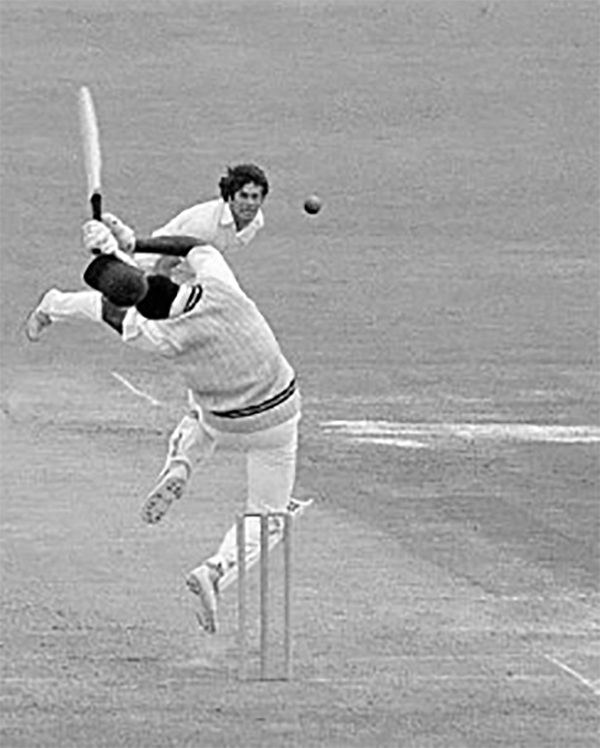
1988: Khan came out of retirement in 1988 at the age of 36 and was captain again. He almost bowled Pakistan to its first ever series win in the West Indies. The series was eventually squared 1-1.
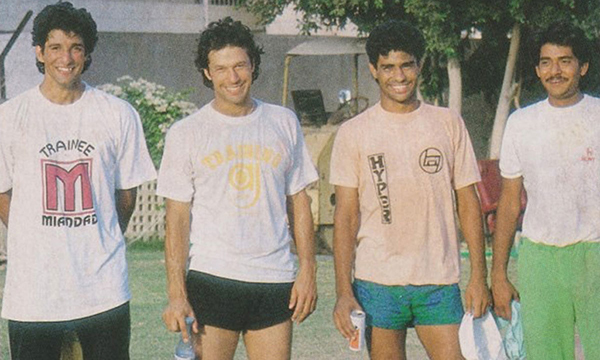
Khan with his fast bowling protégées, Wasim Akram, Waqar Younus and Aquib Javed.
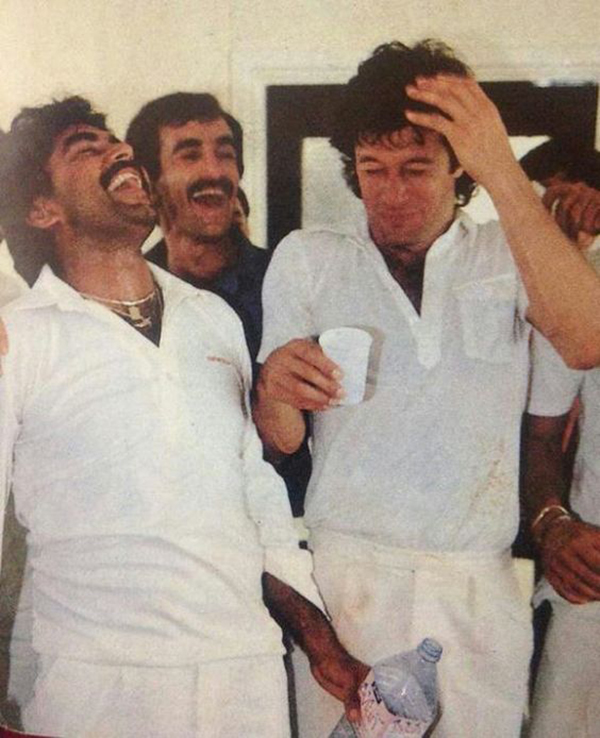
1989: Miandad and Khan celebrate winning the 1989 Nehru Cup in India. During tournament Khan had said that the issue of Kashmir between India and Pakistan should be resolved on the cricket field. However, it was the West Indies that Pakistan defeated in the final.
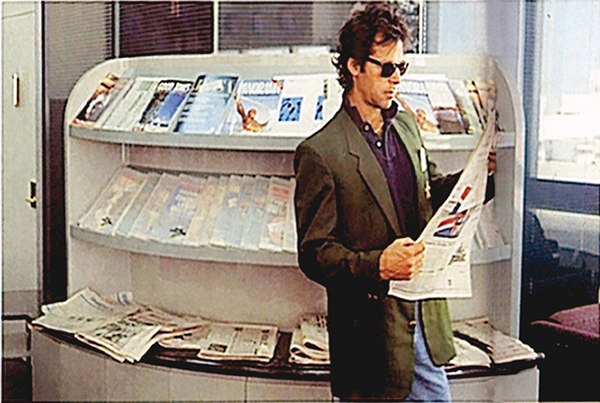
1992: Khan reading a newspaper at an Australian airport during the 1992 Cricket World Cup.
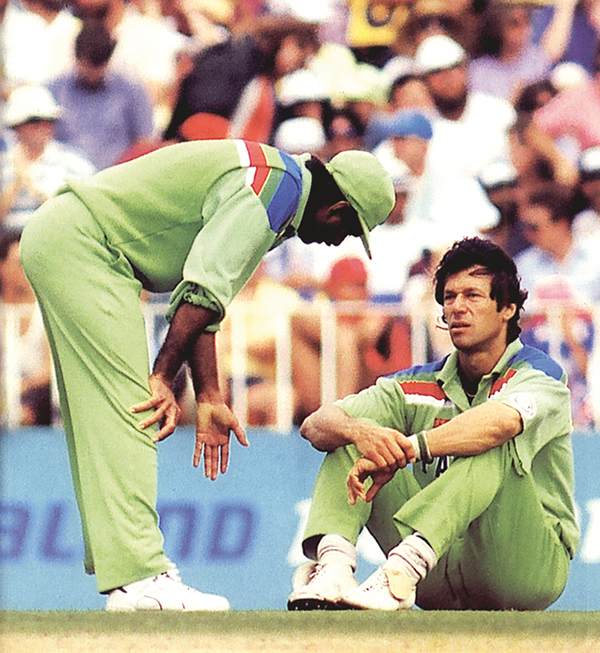
Vice-Captain and captain in a meeting during Pakistan’s shaky start at the World Cup.
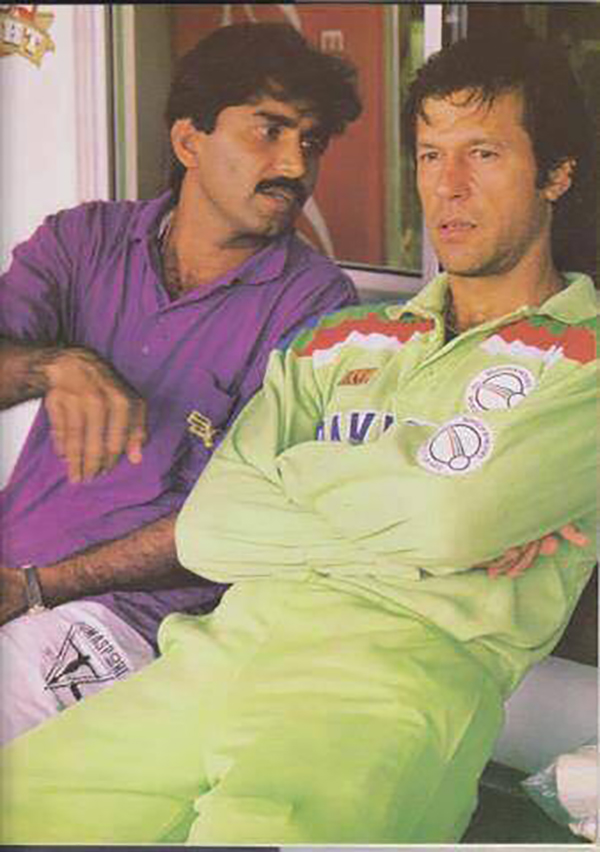
Another meeting. Pakistan still in trouble.
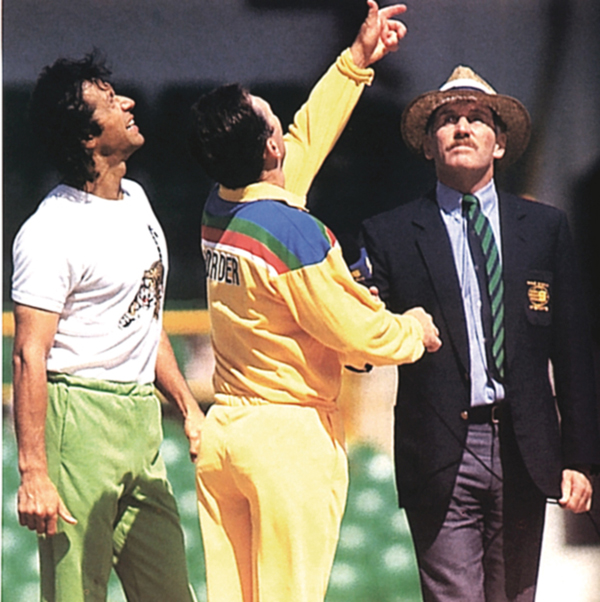
During a do-or-die game against Australia, Khan came in for the toss wearing a T-Shirt with the image of a tiger on it. When commentator Ian Chappelle asked him about it, he said: ‘I am wearing this because we will now fight like cornered tigers.’
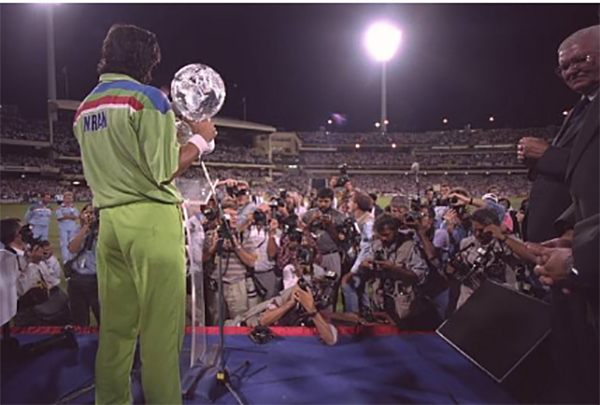
Pakistan wins the cup.
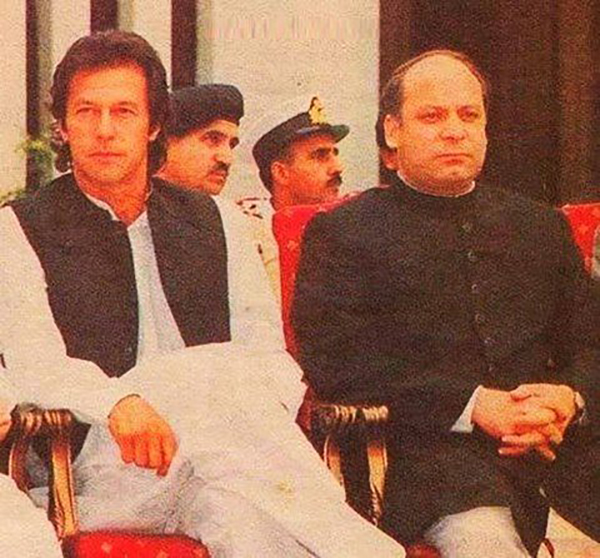
1992: Khan with former Pakistan Prime Minister Nawaz Sharif. After Khan quit cricket in 1992, Sharif invited Khan to join his party, the Pakistan Muslim League. Khan politely refused, saying he didn’t want to get into politics.
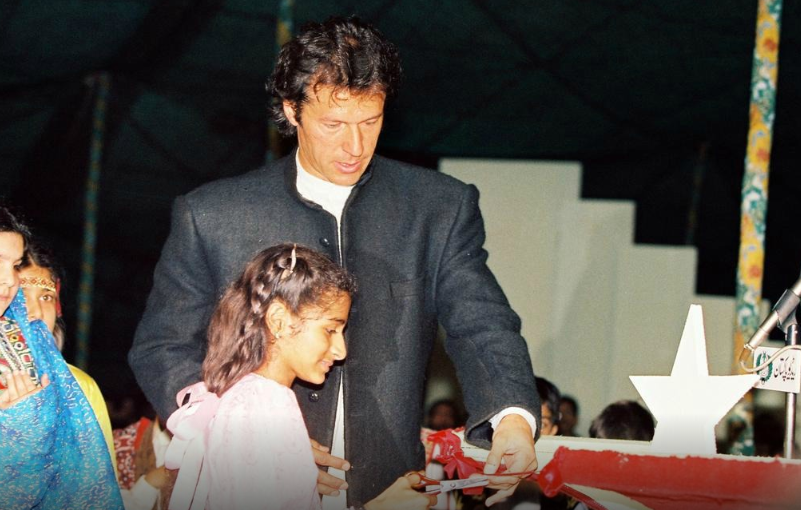
1994: Khan asked a young cancer patient to inaugurate the Shaukat Khanam Memorial Cancer Hospital (SKMCH) in Lahore in 1994. Khan had campaigned for years to get the hospital built after his mother passed away from cancer.
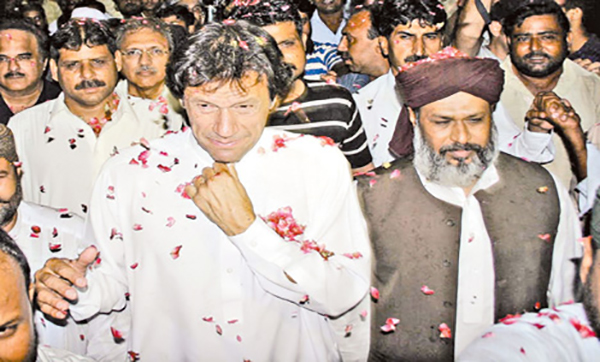
After his retirement, Khan became close to the ‘moderate’ Islamic scholar, Malik Murtaza (right). This is when the media began to report that Khan had become a ‘born-again Muslim.’
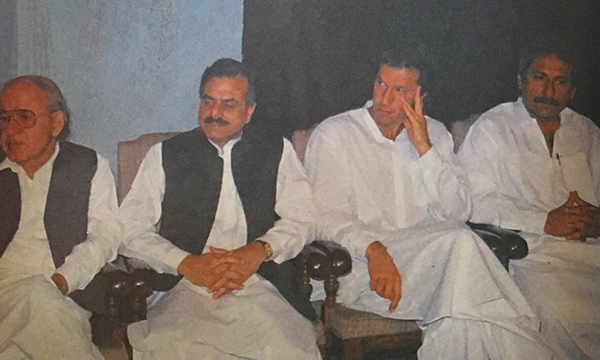
1995: Former ISI chief, the conservative and controversial General (Rtd.) Hamid Gul (second left) took Khan under his wings. This relationship facilitated Khan’s entry into politics.
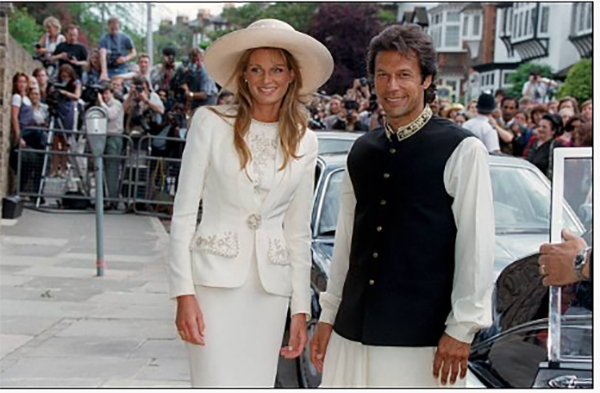
In 1995, Khan married Jemima Goldsmith, daughter of an Anglo-French tycoon. The marriage was not taken very well by Khan’s then ‘political mentor’ Hamid Gul. This ended Gul’s association with Khan.
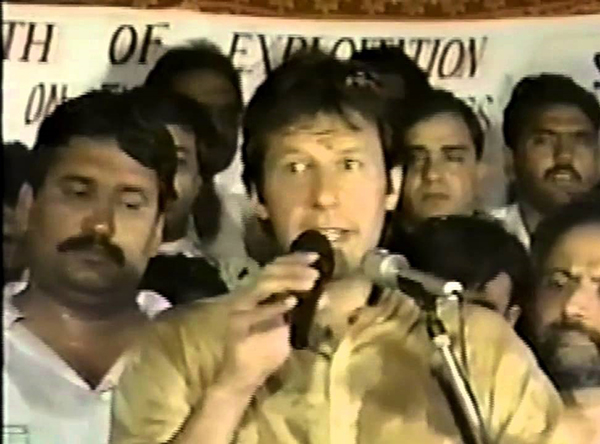
1996: Khan during one of his very first political rallies. In 1996 he formed the Pakistan Tehreek-e-Insaf (PTI) after accusing the country’s two main parties, the left-liberal PPP and the centre-right PML-N of being ‘corrupt.’
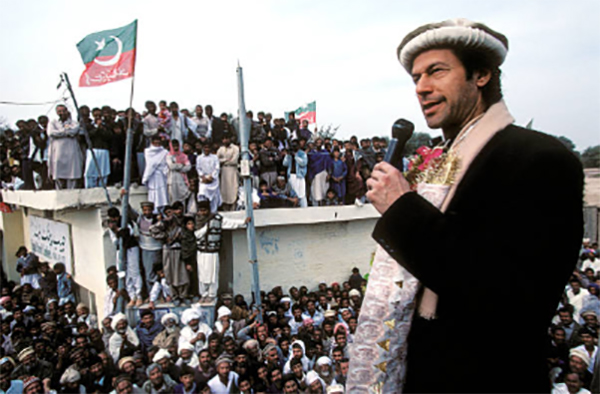
1997: Khan campaigning for the 1997 general election. PTI was routed at the polls which were swept by PML-N.
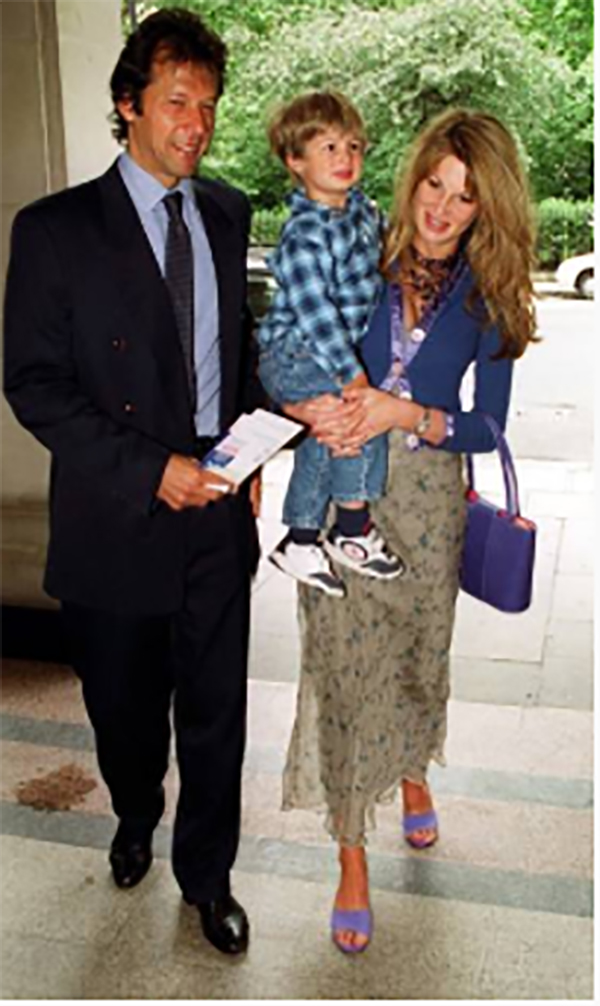
1999: Khan and Jemima with their first-born, Suleiman.
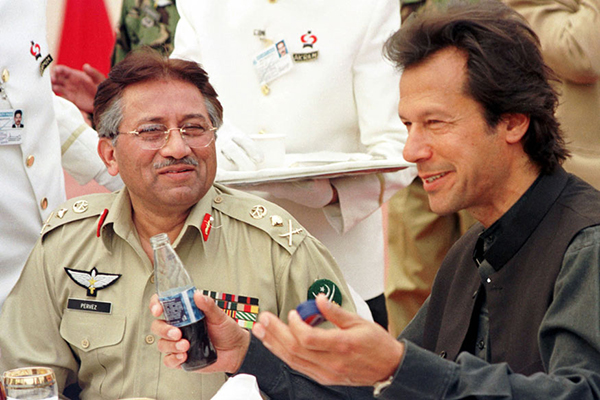
2001: Khan with former Pakistan president General Parvez Musharraf. Musharraf toppled the Nawaz regime in 1999 in a military coup. He promised to get rid of corruption and extremist outfits that had cropped up from the 1980s onwards. Khan supported the coup.
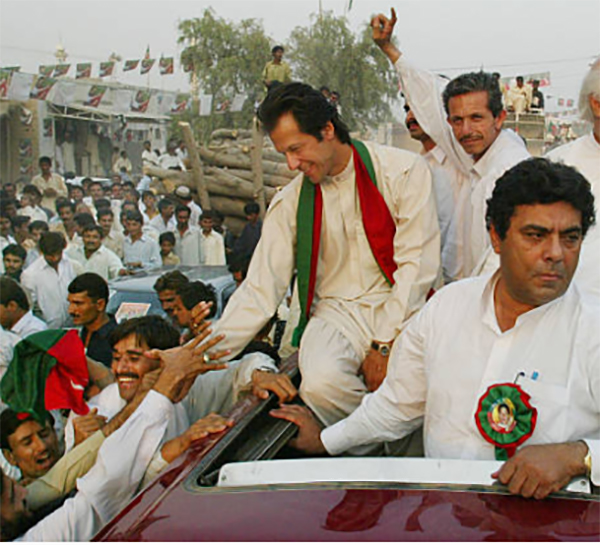
2002: Khan campaigning for the 2002 election. PTI was once again routed, winning just one seat. The election was won by the pro-Musharraf PML-Q. Khan turned against Musharraf. Musharraf explained Khan as ‘a politically and religiously confused man.’
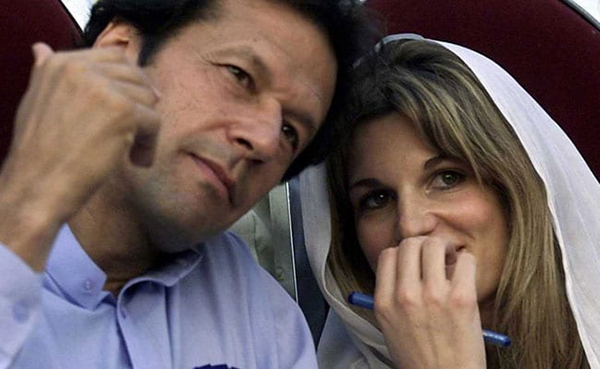
In 2004 Khan’s marriage with Jemima ended in divorce.
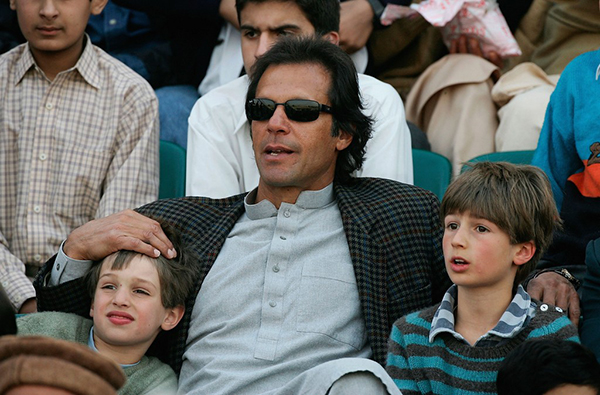
2005: Khan watching a Pakistan-England ODI in Rawalpindi during England’s 2005 tour of Pakistan.
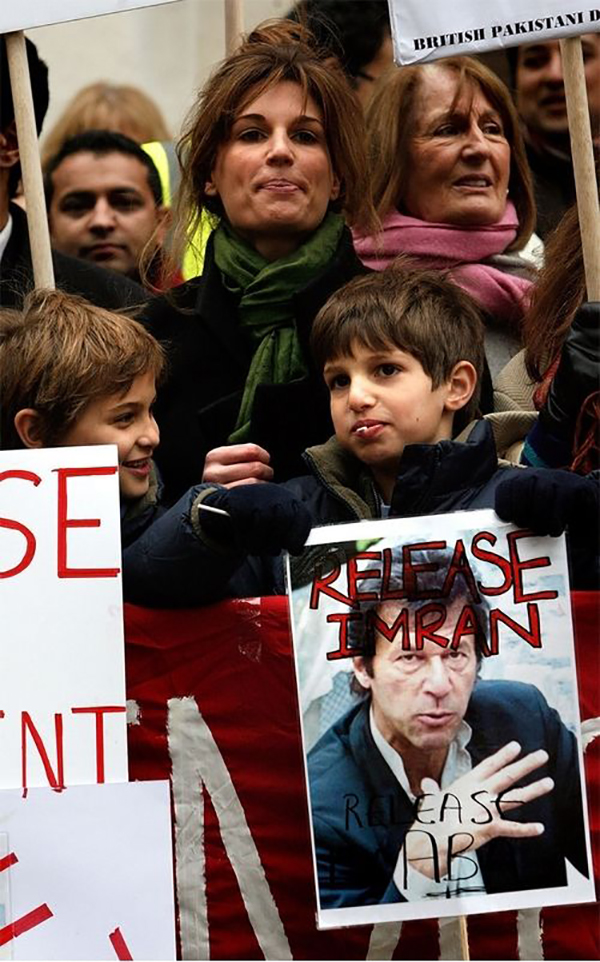
2007: Jemima and sons protest in London against Khan’s arrest by the Musharraf regime in 2007. Khan’s PTI had joined PML-N and PPP in a widespread protest movement against the Musharraf government in Pakistan.
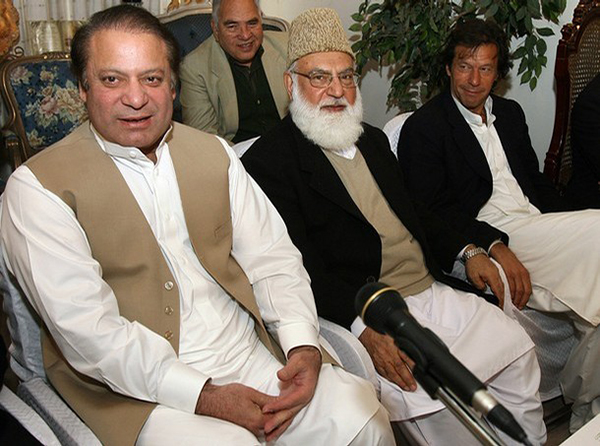
2007: Khan with PML-N chief Nawaz Sharif and Jamat-i-Islami (JI) chief Qazi Hussain Ahmad at a press conference. All three parties decided to boycott the 2008 election. However, PPP chairperson, Benazir Bhutto convinced Nawaz to contest the election. Nawaz agreed. Even though she was assassinated in December 2007, PML-N contested the election. The election were won by the PPP with PML-N coming second. The PPP formed a coalition government with PML-N, MQM and ANP. But PML-N soon left the coalition.
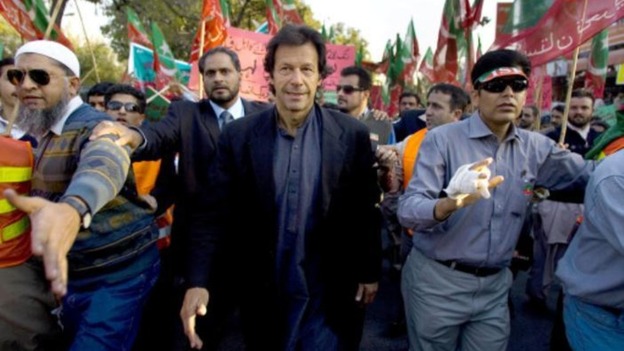
2009: Khan leading a protest against US drone strikes in the remote northern areas of Pakistan. Khan opposed Pakistan’s participation in America’s ‘War on Terror.’ Despite the manifold increase in suicide bombings by extremist groups inside Pakistan, Khan insisted that ‘this is not Pakistan’s war.’ He advocated ‘peace talks’ with the terrorists.
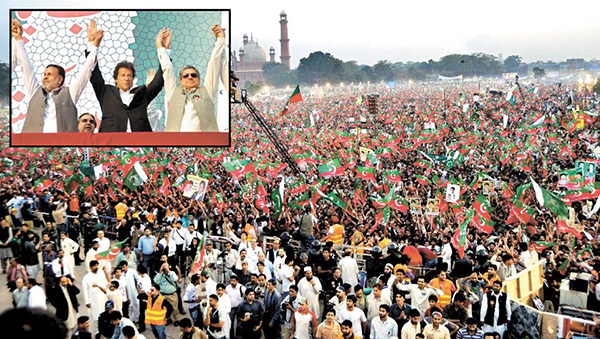
In 2011, Khan surprised political pundits by holding a series of massive rallies in Lahore and Karachi. The PPP-coalition government was battling rampant terrorist attacks and a declining economy. Khan’s sudden rise as a massive crowd-puller was seen by some as a sign of a growing and angry middle-class which did not trust the PPP and PML-N anymore; while others were of the opinion that Khan’s once ‘insignificant party’ was ‘propped up’ by the country’s intelligence agencies who wanted to dislodge the electoral influence of the PPP and PML-N.
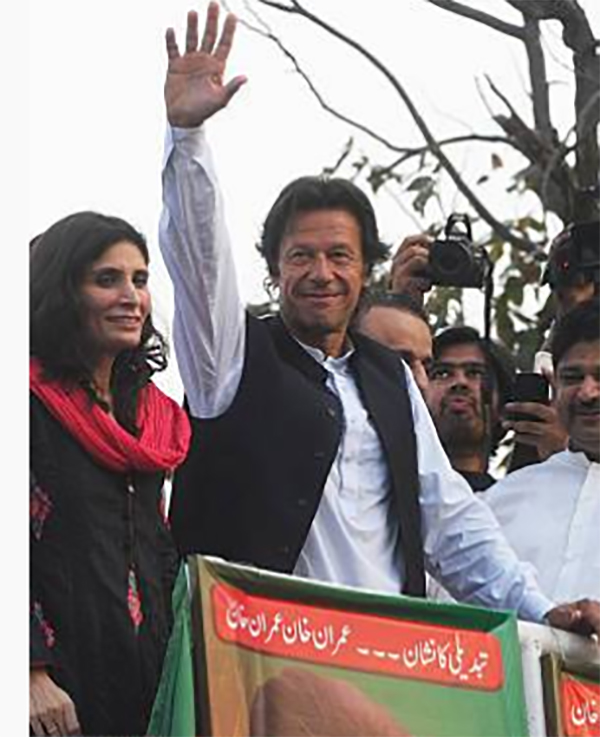
Khan campaigning for the 2013 election. He promised to take Pakistan out of the ‘War on Terror,’ start negotiations with the extremist groups and make Pakistan ‘Jinnah’s Pakistan.’
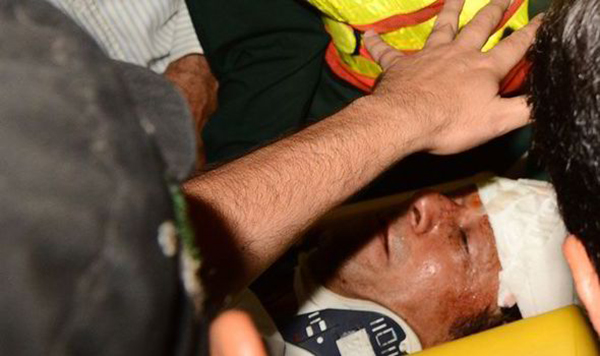
During the campaign, Khan fell from a 15-ft-high platform at a rally and was badly injured. The election was swept by PML-N. PTI came a distant third, behind the PPP. Khan first accepted the results, but once he recovered from his injuries, he claimed that the election was rigged.
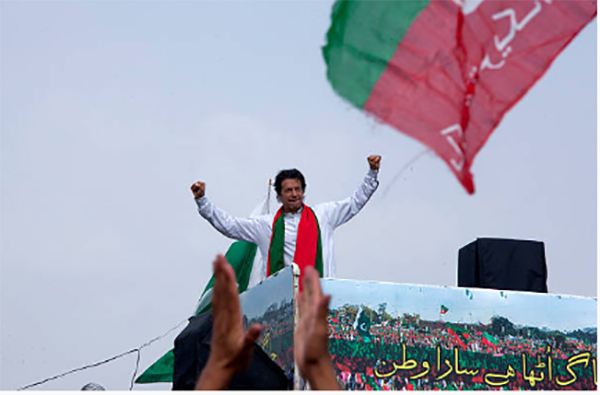
2014: To protest against ‘the rigging of 2013 election’ and ‘corruption of the PML-N regime,’ PTI held a lengthy sit-in in Islamabad, closing down many parts of the country’s capital. Running battles between the police and Khan’s supporters often erupted during the commotion. The sit-in only ended when the Taliban attacked a school in Peshawar and slaughtered over 140 students and teachers. COAS Gen. Raheel Sharif forced Khan to end the protest.
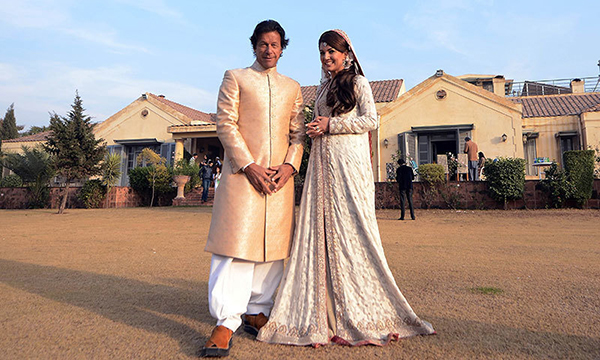
In January 2015, Khan married TV anchor Reham Khan. In October the same year, the marriage ended in bitter divorce. This was Reham’s second marriage. In a book, Reham accused Khan of being an egomaniac, womanizer and substance abuser. In turn, Reham was criticised by many for being power-hungry and marrying Khan to advance her own political ambitions.
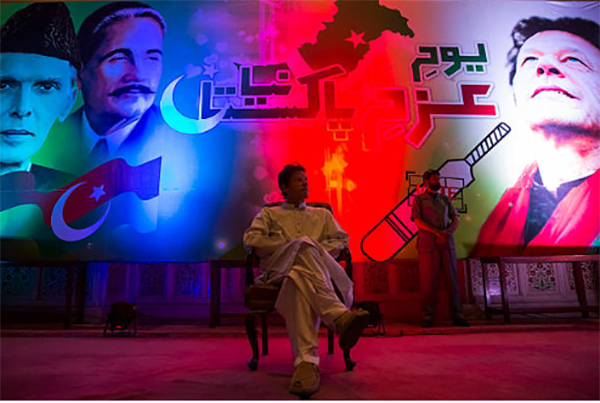
Also in 2015, Khan became a signatory of a joint statement penned by all major political parties and the security forces to launch an all-out military operation against extremist groups. Khan was opposed to such an operation, insisting that negotiations with the extremist outfits should continue. Khan’s stance in this regard had come under severe criticism by his political opponents and the intelligentsia because over 30,000 civilians, soldiers, politicians and cops had been killed in terrorist attacks between 2004 and 2015. But after the 2014 school attack, Khan agreed that the peace initiatives had failed. The operation was a success, bringing the rate of suicide bombings in Pakistan down by 70 percent.
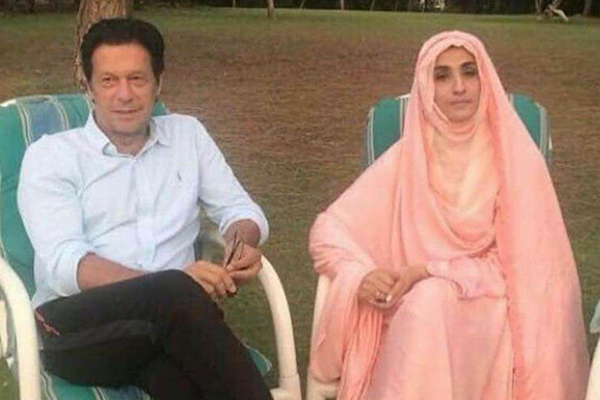
In early 2018 Khan got married for the third time. He married Bushra Manika, a ‘faith healer’ and Khan’s ‘spiritual mentor.’ This was Manika’s second marriage.
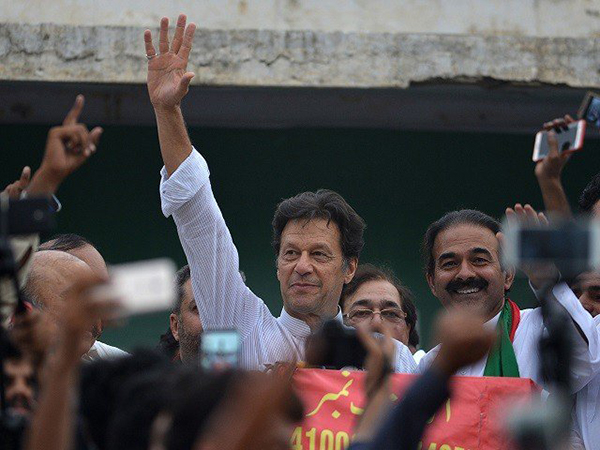
Khan campaigning for the 2018 general election.
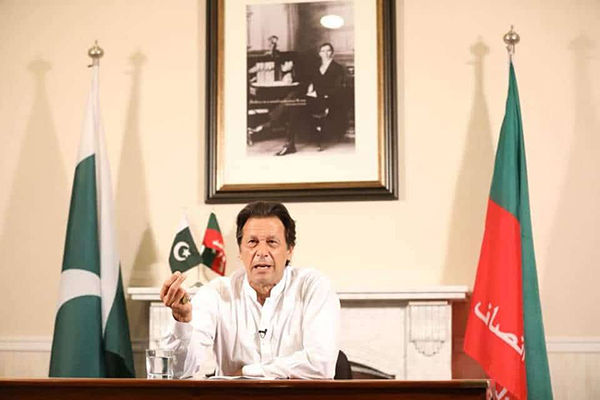
Khan becomes PM. PTI won a simple majority in the 2018 election. It enacted a shaky coalition government at the centre with the help of some smaller parties. Khan promised an ‘Islamic welfare state’ which he said was what Pakistan’s founder Muhammad Ali Jinnah wanted. He also emphasised the importance of eradicating extremism and terrorism and creating a ‘new Pakistan.’ But the first few months of his government were criticised for making various economic and political blunders.
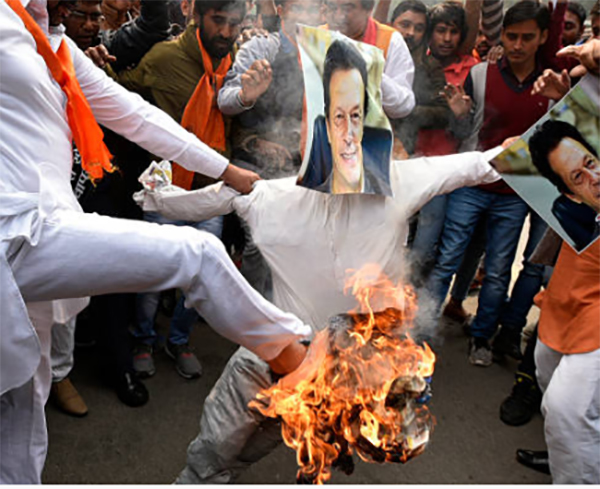
Hindu nationalists in India set fire to Khan’s effigy after a terrorist attack on Indian forces stationed in Indian Occupied Kashmir. The Indian government claimed that the attack was planned in Pakistan by an Islamic militant organization. Pakistan rejected the accusation.
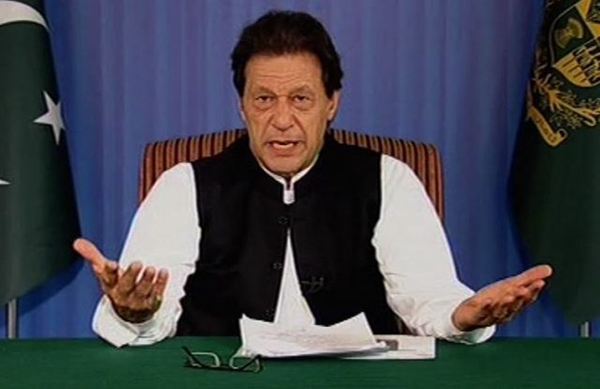
February 2019: After Indian Air Force jets violated Pakistani air space and claimed that the planes had ‘destroyed a terrorist base’ and ‘killed over 300 anti-India militants,’ Khan remained quiet. The next day when Pakistani Air Force jets shot down two Indian jets, Khan appeared on TV and offered peace to India. Pakistani forces also captured an Indian pilot. Khan asked India to provide Pakistan any information to back its claims about the militants. He said Pakistan would take immediate action. As it turned out, the Indian jets had only bombed an inhabited forest area near the Line of Control (LOC) between the two Kashmiris.
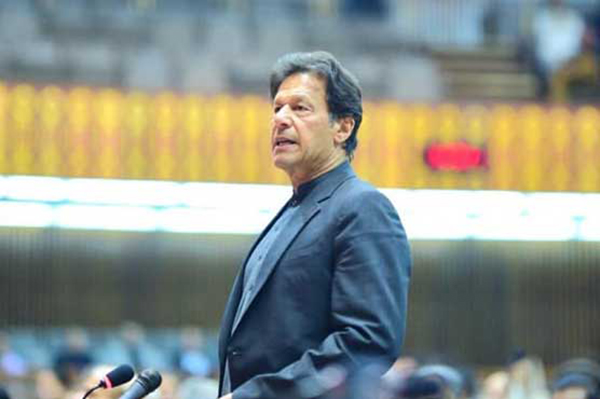
A few days later, Khan told a joint session of the parliament that he has decided to return the captured pilot as a peace gesture. He also spoke about the dangers and meaninglessness of war. Khan then ordered a crackdown against outfits which might be using Pakistani territory to launch attacks in Kashmir. Khan’s approval ratings that had continued to slump till January 2019, suddenly shot up considerably.
